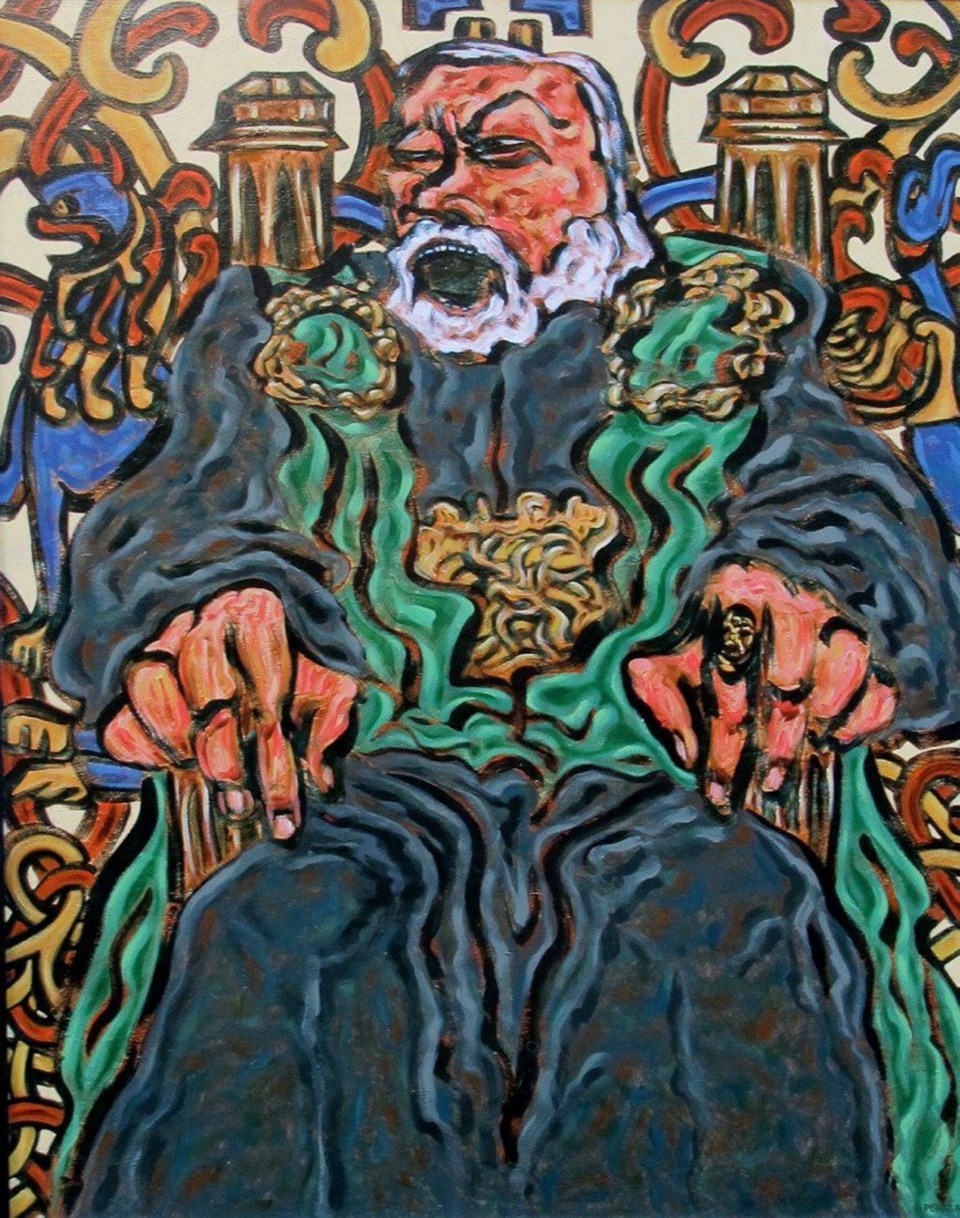I dropped in on Paul Peregal at his apartment, a cosy spot bursting with art books and recordings of jazz and classical music and richly hung with his large oil paintings. Peregal teaches the advanced painting and drawing classes at the Victoria College of Art and is one of the artists featured at this weekend’s James Bay Art Walk. He and I immediately fell into conversation about the background of his utter commitment to art.
Peregal grew up in Montreal and began his training under Arthur Lismer at the School of Art and Design at the Montreal Museum of Fine Arts. He learned about colour from Lismer and was inspired by the Canadian art history that was all around him. The underpainting of his compositions, often a warm sienna brown, is something he learned from his study of the panels of Tom Thomson and James Wilson Morrice.
At that time — the early 1960s — Montreal was in a ferment of abstraction. The Québécois artists teaching at École des Beaux Arts (which was subsumed into Sir George Williams and later Concordia University) were of the generation which broke with the subservience to the Roman Catholic hegemony and the dominance of figurative art and had set off on their own path. Peregal found the library at the École was superior to that at the Museum of Fine Art, and on visits there he was exposed to the students of, among others, Paul Emile Borduas.
Across the street from the École he discovered his own mentor, an older artist who, despite a proletarian background and politics, was a polished classical realist. This man took Peregal under his wing and tutored him in the old-world traditions, in contrast to the abstract art which was then filling the galleries. Thus the young artist emerged with a well-rounded education and the skills to position himself wherever he chose. At this time, when American painter Adolf Gottlieb had announced that “a thousand years of abstraction” would reign, Peregal discovered a book entitled The New Humanism, which introduced him to a generation of figurative artists still working in the representational manner, a late evolution of expressionism.
Peregal continued with his devotion to poetry and classical music. As the years went on, he painted his way through cubism and other manners, much as these days he takes his students through the chapters of modern art by having them paint in a sequence of modes — from Impressionism through to entirely non-objective painting. His own “homecoming” was his discovery of the late expressionism of the School of London.
This group of painters — never a “school” in any formal sense — were gathered for an exhibition curated by R.B. Kitaj at the Heywood Gallery, and included artists like Francis Bacon, Lucian Freud, Frank Auerbach and Leon Kossoff. The work was powerful and upsetting, and flew in the face of what Peregal calls “a vacuous cul-de-sac of exhausted abstract notions.” The School of London would soon be overshadowed by the magpie eclecticism of pop art, but its mix of visceral paint-handling and intellectual power continue to influence. It is in this mode that Peregal found his own space.
Here in Victoria, a number of artists have worked in this general area. Max Bates was a figurative painter of irrepressible expressionist tendency. Glenn Howarth’s dark musings came to canvas in a style owing something to Francis Bacon. Jim Gordaneer has long painted in a manner whose representational aspects almost entirely merge with abstraction. Like them, Peregal has taken inspiration where he finds it and forges his own meanings and methods.
These days he describes his vivid oils as “interior portraits.” He draws his subjects from all areas of his study, including music, poetry, history and painting. And while the subject may be a friend, a historical figure or someone entirely imaginary, the image is just a starting point for his emotional and creative engagement with paint. It may be that, while listening to a recording of Mahler’s music he begins a portrait of that composer from memory. Once the painting is begun, the colour choices, the paint handling and the sheer expressive vigour of what Peregal is doing are all informed by his personal experience of the composer.
“An important factor in my painting process is to identify as fully as possible with one’s subject, very much like a method actor who researches his character so thoroughly that he ‘becomes’ or ‘feels at one’ with that individual,” he says.
The last canvas he placed on the easel before me was a larger-than-life image of King Lear. Inspired by Laurence Olivier’s last performance, this tragic monarch provided a huge field for Peregal to bring his skills to bear. I came away fairly humming with creative inspiration.
Paul Peregal is part of the James Bay Art Walk. His work can be seen at 80 San Jose Ave. The art walk map is atjamesbayartwalk.ca and takes place today and Sunday from 11 a.m. to 5 p.m. For more details tel. 250-383-7914.
